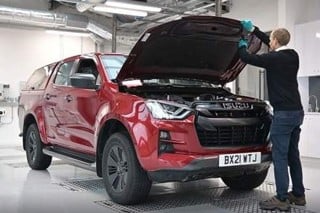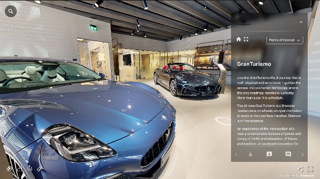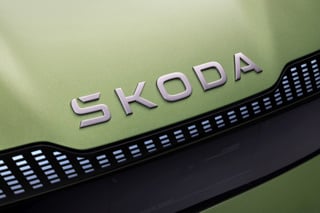Connected cars and data-gathering
Manufacturers worldwide are developing connected cars. Ford, for example, claims that 90% of its new cars will be connected by 2020, and it is not the only carmaker targeting such ambitious growth.
Other companies are getting in on the act, too, with plug-in boxes allowing even older cars to transmit location and failure code data. Soon, a large proportion of cars on British roads will be sending all kinds of information back to the manufacturer, owner and, potentially, car dealer.
Penny Searles, the chief executive of Smart Drivers Club, said car dealers could stand to profit more than most.
“With connected car technology, the dealership can keep an ongoing relationship with the customer – there’s more proactive capability and they can increase their revenue through connected car data.
“Dealers know in advance when a car needs servicing or an MOT, or even when it has been in a crash, so they can increase revenue by getting people in for servicing, in for repairs, and in for MOTs.”
However, Searles said dealers can also use the data to offer customers vehicle reminder and tracking services, which in turn encourages drivers to share their data and helps the dealer.
“Dealers can get people into the dealership, but by providing those services to the customer, they’re providing an exchange for the data. The customer gets something back as well.”
Online service booking
If you can use the internet to order a new mobile phone or book a doctor’s appointment, it seems only natural that you should also be able to book a service online. According to Tony Whitehorn, Hyundai’s UK chief executive, the system is becoming increasingly popular, with customers able to make appointments outside of normal office hours.
“Now a number of people are enabling customers to book online. With six clicks, you can book your car in for a service. It takes 10 seconds. Somewhere between 25% and 30% of the appointments are done online at the moment, but there’s still 70-75% that are done either face-to-face or on the phone.
“But what’s fascinating about this is that around 35% of those online bookings are being done out of hours. When I buy something off Amazon, when do I do it? I do it at 9pm. Now I can actually book my car in for a service at 9pm.
“It enables people to say ‘you know what’s most convenient for me? 11am? I’ll book then’, as opposed to having to phone up, having to wait and say ‘I can’t make 11am’ and having to fit it in.”
Intelligent stock management systems
While technology is clearly playing a key role in the customer-facing part of the aftersales process, it has plenty of practical behind-the-scenes applications, too.
Traditionally, choosing which parts to stock has been a low-tech, trial-and-error process driven largely by the service team’s experience. However, Gary Brooks, of software firm Syncron, said technology can now inform stocking policies with algorithms and online ordering.
“By looking at mean times between failure and historical data, algorithms can determine what the stock levels should be at various points in the supply chain. The dealers get their orders based on the recommendation of the system, and they can place their orders or they can run it on autopilot, where it automatically places orders.”
Eventually, said Brooks, companies will use connected car technology to adopt the just-in-time principles that help modern factories run so efficiently.
“There’s a lot of excess inventory in the supply chain,” he said. “Now, with the evolution of the ‘internet of things’, we are moving away from just-in-case and moving to just-in-time. Technology is removing friction.”
Brooks did warn, however, that although dealers can reduce stock levels with technology, they will always need parts available on-site.
“It’ll always be a balance. It’ll take a long time before all the cars on the road are connected, so I think there will always be a need for the just-in-case approach.”
Aftersales DMS systems
Providers of dealership management systems (DMS) have been working to link processes to deliver both speed and efficiency in franchised dealers’ workshops.
Cox Automotive believes the ability to connect with different systems is a key selling point of its Incadea DMS.
Coupled to Cox’s Xtime aftersales platform, Incadea manages accounts, vehicle administration, parts inventory, showroom, aftersales management, service and marketing.
It is also capable of collating CRM customer data with that held by service, parts, telephony and accounts systems.
Vauxhall retailer Thurlow Nunn implemented the system across its 14 locations.
Simon Bottomley, managing director, said the deal would “transform the business and result in huge efficiency savings”.
In January this year Epyx released its new reporting platform designed to give aftersales departments an enhanced insight into their business.
The Network Performance and Opportunities Report (NPOR) provides graphs, charts and tables that show how an aftersales department is performing compared with recent years.
Tim Meadows, Epyx’s commercial director, said some of the real added value is delivered by its ability to identify job leakage to other providers and where missed opportunities for sales are taking place.
He said: “There are a range of enhancements, including reports covering geographical areas by radius, performance on job types such as MOT and servicing, and even analysis by specific model.
“In an industry where high-quality data is difficult to find, what we are offering has clear value.”
An integrated, self-service future?
Iain Nickalls, director of software firm eDynamix, believes dealers will eventually have the option to integrate data and technology to offer customers an efficient, fully automated service.
“The automotive industry is slightly behind the curve,” he said. “This technology means we can prompt customers in multiple ways, we can remind a customer that their service is now due and then provide a link to make a booking online, so it’s a fully integrated approach, which allows a customer to self-serve. I think that’s the way most industries are going.
“We are working towards the stage where there’s potentially no human interaction. From the point of reminder, you book online and drop the car off, then the vehicle health check is carried out, the work is identified. Then you can authorise any work that has been identified online and you can pay online. You’re then notified that the car is ready, pick up the keys and then go.”
Searles believes that even the customer themselves will one day be taken out of the loop as autonomous cars drive themselves in for remedial work.
“Once driverless cars come into force, they’ll send a message to the dealer saying ‘I’m coming in at 10am’ and then they’ll go off, change their tyres, and be back in the car park when the owner leaves work,” she said. “It’s already happening in trials.”
Workshop video systems
Video systems are now widely used by car sales departments, but how much value do they add to an aftersales department in terms of greater sales, time-saving, customer trust?
Everywhere you look, image- and video-based content seems to be taking off. Consumers are digesting information more visually than ever, with everything from product reviews to social media trends adopting the technology.
It makes sense, then, that this trend should rear its head in the automotive industry.
According to Alistair Horsburgh, the chief executive of CitNOW, the practice has become necessary to improve trust since health and safety rules stopped customers setting foot in the technicians’ domain.
“About 25 years ago, a customer could stand under a car with a technician, but that was then disbanded for safety reasons,” he said. “The car went into this big black hole of the service department and the only way you knew it had been serviced was that it had been washed.
“So we give technicians an iPod or tablet and they film a short video, upload it and it’s sent to the customer with the vehicle health check. The customer can then approve any work online.”
Horsburgh said the trust benefits usually lead to improved revenue for an aftersales department, as well as increased customer satisfaction.
“Obviously it will vary brand-by-brand, but typically, the average dealership’s ‘red-work’ conversion rate is 20% better when they put video into their vehicle health check.” JAMES FOSSDYKE


















Login to comment
Comments
No comments have been made yet.